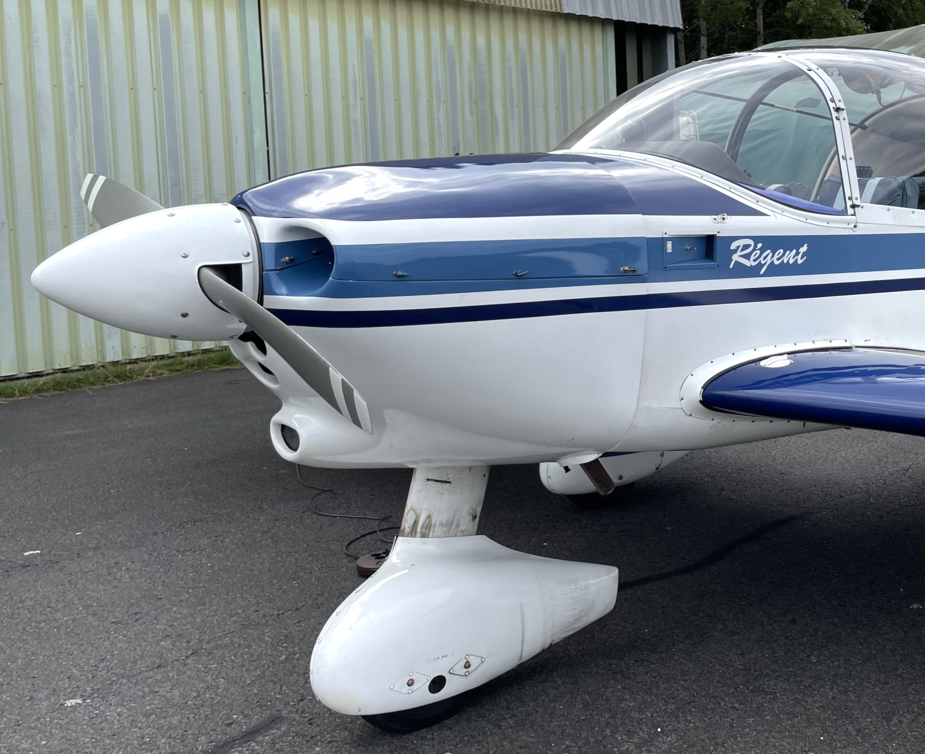Peter wrote:
That location is not likely to work well.
This confirms my impression. The location was chosen by the installer, also for convenience. As a matter of fact, a stock OAT probe (with INOP display) was on the left side when I bought the aircraft. The OAT probe of the AV-30 replaced it, and the OAT probe of the engine monitor was mounted symetrically on the other side. Mounting a temp probe in the wing would require fabric works. I will consider it if/when I re-do the fabric of the wings.
Plain wrong
It depends on how pedantic one wants to be.
When I do a longer flight, say EGKA-LDLO, all that matters is this

and the ETA being before LDLO closing time.
I mean, you are not going to suddenly get bored because your TAS is 130 instead of 150. Or your GS is 130 instead of 150 because you’ve suddenly picked up a 20kt headwind. You are flying to LDLO so that is where you will fly, IF you can do it safely. You have a bottle to pee into so there are no other considerations.
At reasonable altitudes, non-turbo planes are flying at WOT (wide open throttle) and that determines your TAS. You have no choice in the matter. On a TB20 it will probably be about 150kt. I don’t need to know it, but if I do, I get it off the ASI subscale.
Mounting a temp probe in the wing would require fabric works.
OK; that’s interesting. I would look at this kind of sensor

but this won’t be the AD590 type of device used in GA OAT probes so you will end up with a different (and standalone) instrument. I build these in my day job – PT100 PT1000 4-20mA AD590 and thermocouple instruments. With a bit of extra work the signal could emulate an AD590 for your TAS instrument.
Or you could make a metallic patch which sticks on the bottom of the wing, say 3 × 3 cm, with an AD590 stuck to the inside surface so you have just a little hole in the fabric. Do this next to a spar so the metal can be screwed with 2 screws

etn wrote:
Another example below. Wind was calm that evening.
Evidently the numbers you’re seeing in that picture indicate a 13 knot headwind component. That might be correct or it might not – calm winds on the surface and 13+ knots at 5,000’ is perfectly possible. Your OAT shows 20 C, which at 5000’ is ~ISA +15.
If you can’t determine whether your OAT probes are overreading or not, one way to learn more would be to wait for a very calm morning or evening with conditions as close to ISA as possible and perform the three sides of a triangle experiment at very low level, such that IAS is almost equal to TAS. The comparison of your IAS to average GS will then (pretty much) tell you whether your IAS is reading correctly.
tmo wrote:
Do you have an exhaust that “outputs” to both sides? If not, perhaps your exhaust pointed to the side where the probe reads higher?
Exhausts are at the bottom – one on each side for each cylinder pair. I absolutely do hope that no exhaust ever comes into the air intakes!!

In those locations I’d say you’re not only getting funky effects because of the airflow into the duct but also heat from proximity to the engine. Under the wing, as Peter says, or further back on the fuselage would be better. Some Pipers seem to have them high up on the windscreen, a straightforward thermometer with the probe and dial in one assembly, piercing either the frame or the transparency.
Mooney_Driver wrote:
All performance tables, range calculations e.t.c. are based on TAS and TAS only.
That’s what I though, too, until I saw the performance tables of an EASA aircraft in current production which uses CAS in the power setting diagrams. Totally crazy if you ask me.
All performance tables, range calculations e.t.c. are based on TAS and TAS only.
Maybe with jets but with pistons? It’s all IAS or CAS. IAS is the true measure of performance, at sea level. The TAS gain is something you get for free when flying higher.
Many previous threads. It’s a religious topic 
IAS is the true measure of performance, at sea level.
That’s fine if you fly at sea level. Otherwise planes with higher aspect ratio wings can go higher and accordingly get more TAS gain for free when doing so, but pay a penalty in IAS when lower due to higher frontal area. Comparative aircraft speed capability cannot be fully described by comparing max IAS at sea level.
What is ELI5?
Acronym of “Explain like I’m 5”.
Provide an explanation that is very easy to understand.
Mooney_Driver wrote:
Plain wrong.
It’s not. When was the last time you cared about TAS in a SEP? I said mostly irrelevant.